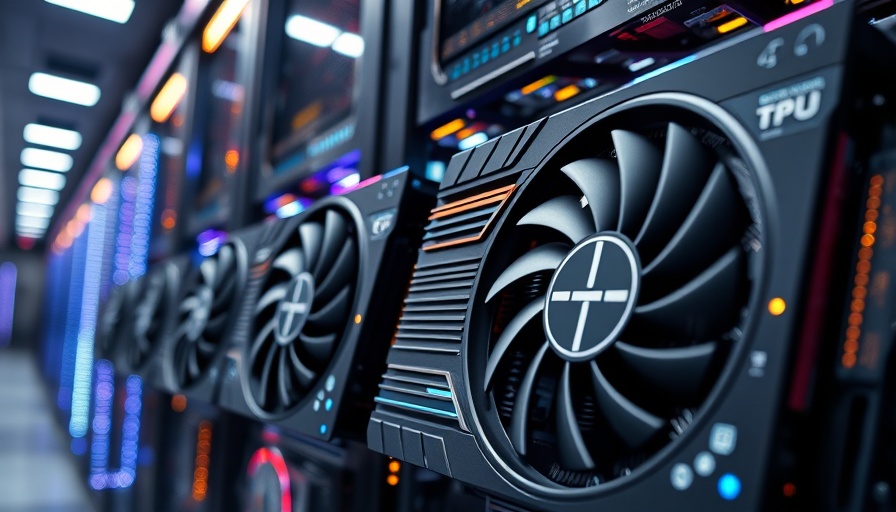
Understanding the Basics: GPUs vs. TPUs
In the rapidly evolving world of artificial intelligence, small and medium-sized businesses (SMBs) must understand the tools available to train complex models. Central to this are Graphics Processing Units (GPUs) and Tensor Processing Units (TPUs). TPUs are custom-built chips by Google specially designed for machine learning (ML) tasks that require intense computations, allowing them to handle matrix operations efficiently. On the other hand, GPUs were initially created for graphics rendering but have since evolved to support deep learning tasks, thanks to their numerous parallel processing cores.
Which is Faster? Comparing Performance in Transformer Model Training
When it comes to training large transformer models, you may wonder which processor offers the best performance for your business needs. TPUs often outshine GPUs in handling extremely large batch processing, as proven by their remarkable speed in training popular models like Google's PaLM. In fact, the latest TPUs can boost training speeds by up to 2.8 times compared to earlier models.
However, if your business relies on a variety of model architectures or needs flexibility for custom programming, GPUs offer the upper hand. They shine in scenarios with smaller batch sizes and unconventional model structures, offering a robust solution across various frameworks like TensorFlow, PyTorch, and JAX. For businesses involved in diverse ML tasks, GPUs may provide the flexibility required.
The Ecosystem Matters: Choosing the Right Software Framework
The software ecosystem you choose can significantly impact your ML model's training efficiency. TPUs are built to integrate closely with Google’s AI frameworks, primarily TensorFlow and JAX. While PyTorch can be utilized, its support on TPUs is not as mature or widely adopted, which could be a limiting factor if your business prefers or requires flexibility across various tools and frameworks.
In contrast, GPUs offer extensive support for all major ML frameworks, allowing businesses the freedom to choose based on their specific requirements and preferences. This adaptability can lead to better outcomes as it enables companies to leverage a range of software tools without being restricted to one environment.
Scalability: Going Big in the Cloud
Scalability is a crucial consideration for SMBs venturing into deep learning. TPUs allow for seamless scalability through Google Cloud, which is vital for businesses that predict rapid growth and larger computational requirements. With the ability to connect thousands of chips, companies can maximize their throughput while minimizing latency—an essential aspect of maintaining performance as demand increases.
On the other hand, GPUs have a more versatile deployment landscape with options ranging from cloud services (like AWS, Azure, and Google Cloud) to on-premises setups. This flexibility suits businesses with varied operational requirements, allowing you to choose a setup that aligns best with your resources.
Making the Right Choice for Your Business
Ultimately, the decision between GPUs and TPUs for training large models should align with your business's unique needs and goals. If your focus is on training specific TensorFlow-based large language models quickly, TPUs may be your best option. However, if you require versatility and wish to experiment across different model architectures and frameworks, GPUs could be a better fit.
Your choice also hinges on cost considerations, available resources, and speed requirements for model training. Whichever path you choose, understanding the strengths and weaknesses of both processors is crucial for making an informed decision that drives your business forward in the AI landscape.
As you embark on your journey in machine learning, remember that the right infrastructure will empower you to navigate the complexities of AI with confidence. Explore your options, weigh the benefits, and choose the technology that best supports your business ambitions. By doing so, you can harness the power of AI and bring innovative solutions to your customers that set you apart in a competitive market.
 Add Row
Add Row  Add
Add 



Write A Comment